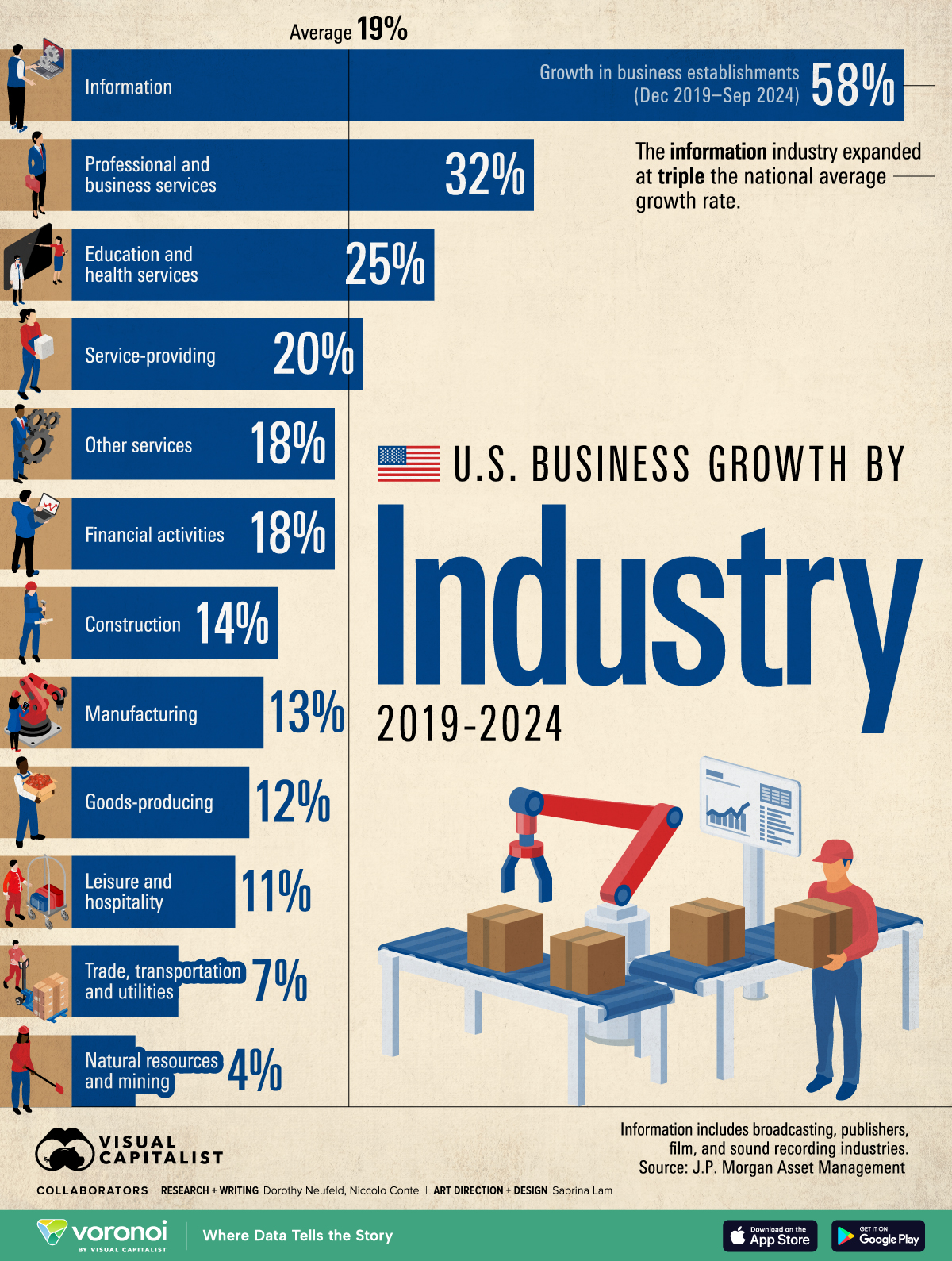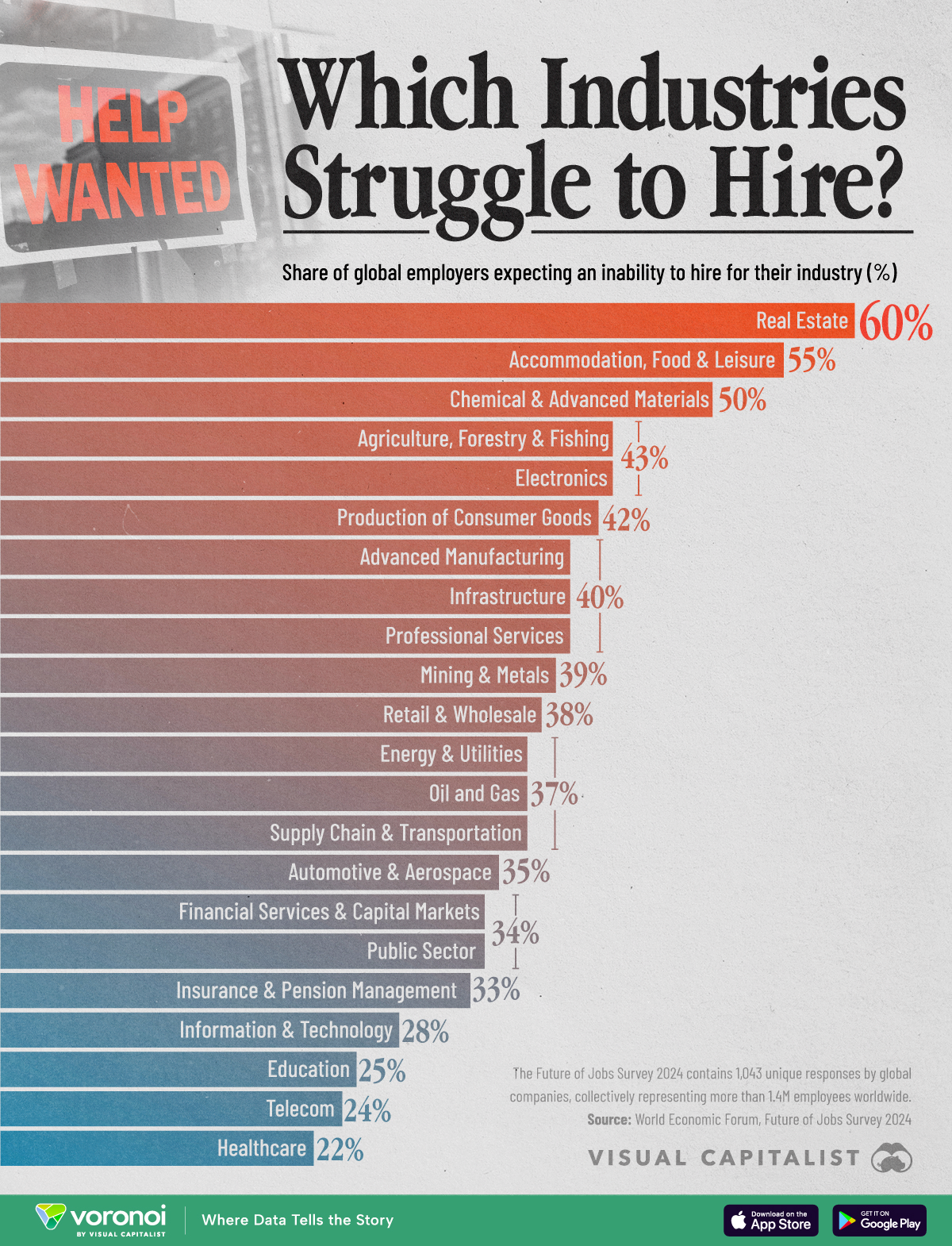We are living through the fastest period of technological change in history — a fact that demands not just awareness, but active engagement. Here’s how to recognize this shift, and what you can do to succeed in it.
Our ancestors survived by thinking locally and linearly. Yet today, this mindset often leaves us struggling to anticipate the sweeping, unpredictable effects of technology.
To predict the future of technology, you must understand where we are and where we are headed ... but it also helps to recognize how far we’ve come—and how quickly things are now accelerating.
A Timeline of Human Innovation – From Stone Tools to AI
Our World In Data put together a great chart that shows the entire history of humanity in relation to innovation. It shows how fast we are moving by telling the story with milestones.
Innovation isn’t only driven by scientists. It’s driven by people like you or me having a vision and making it into a reality.
To see just how far we’ve come — and how quickly things now change — let’s look at some milestones.
3.4 million years ago, our ancestors supposedly started using tools. 2.4 million years later, they harnessed fire. Forty-three thousand years ago (almost a million years later), we developed the first instrument, a flute.
Why Speed Matters
The innovations we just discussed happened over an astonishing expanse of time. Compare that to this: In 1903, the Wright Brothers first took flight ... and just 66 years later, we were on the moon. That’s less than a blink in the history of humankind, and yet our knowledge, technologies, and capabilities are expanding exponentially.
Acceleration Is The New Normal
Technology was like a snowball gathering speed, but it’s become an avalanche—hurtling forward, accelerated by AI. Here are some fun facts to back that up.
-
ChatGPT’s Explosive Growth: In 2025, OpenAI’s ChatGPT will hit 700 million weekly active users—a fourfold increase over the previous year. In its first year, ChatGPT reached 100 million monthly active users in just two months, a milestone that took Instagram 2.5 years.
-
Workforce Shift: About 97 million people will work in the AI sector by the end of 2025, and the value of the U.S. AI sector already exceeds $74 billion.
-
Usage Surge: As of July 2025, users submit 2.5 billion prompts to ChatGPT every day, and analysts expect OpenAI to reach 1 billion users by the end of the year.
Yesterday’s stable footing guarantees nothing; you must constantly adjust or get swept away.
While AI dominates headlines, the same story of acceleration is unfolding in fields like biotechnology, climate tech, and robotics. It’s happening everywhere all at once. From nanotechnologies to longevity and age reversal, and from construction to space exploration ... exponential change is becoming a constant.
Turning Information into Actions – What To Do Now
Though I lead an AI company, I’m not an engineer or a data scientist — I am a strategist. My role is to envision bigger futures, communicate them clearly, and leverage tools that free me to create greater value. Ultimately, that’s going to become everybody’s job.
I don’t believe that AI will replace people like us quickly, but common sense tells us that people who use AI more effectively might replace us faster than we’d like.
Start by experimenting with new AI tools. When was the last time you tried a new tool or technology? Even though our company works on AI every day, I’ve challenged myself to continually expand my ability to use AI to create the things I want.
You’ll probably find that the things you want most are just outside your current comfort zone — or you’d already have them.
The next level of impact and value lies just beyond your current habits—comfort is the enemy of reinvention.
A good start is to think about what routine task you could automate next week.
Leaders must move from certainty-seeking to rapid experimentation. Encourage nimble, high-frequency experimentation with emerging tech.
Focus on skillsets that complement, not compete with, automation. And vice versa, focus on automation that complements (rather than competes with) unique abilities.
Share your learnings with your team or community. Set the expectation of progress, and make regular sharing and reporting part of your process. Reward the sharing of learnings over the accumulation of dead knowledge.
Prepare teams not only technologically, but culturally and psychologically, for relentless reinvention.
Brene Brown, a noted leadership expert, says, “Vulnerability is the birthplace of innovation, creativity, and change.”
Don’t let perfectionism hold you back. You don’t need to know every destination before boarding the train; what matters is that you get on. Waiting too long is no longer safe—the train is leaving, and the cost of inaction is climbing.
Success now means hopping on and adapting while in motion—not waiting for all the answers.
Onwards!
 via
via 

Foreign Direct Investments
Against a backdrop of economic uncertainty, supply chain upheaval, and rapid technological transformation, foreign direct investment remains a bellwether of global confidence and strategic priorities.
Looking back to 2024, the patterns of FDI offer a window into what the world’s investors value most—and what new risks and opportunities are on the horizon.
In a rapidly shifting global landscape, investors are constantly on the hunt for both opportunity and resilience. Which sectors and regions captured the lion’s share of foreign direct investment in 2024—and what fueled these evolving priorities?
The Global State of FDI in 2024
Visual Capitalist created an infographic that shows Foreign Investors allocated more than $1 trillion across the top 10 global sectors in 2024, highlighting the scope and realignment of worldwide capital movements.
via visualcapitalist
Sector Standouts: Winners and Surprises
Now let’s zoom into specific industries.
Renewable energy topped the list, drawing $270.1 billion in FDI. Even so, renewable energy FDI declined — mainly due to rising material costs, tougher regulations, and delayed projects. Despite these setbacks, long-term prospects in renewables are robust.
Perhaps the most surprising winner of 2024, the communications sector not only rebounded but grew by an astonishing 84%, far outpacing previous years. This likely reflects accelerated 5G rollouts and infrastructure expansions in both developed and emerging markets.
Semiconductors followed closely, likely reflecting the growing infrastructure requirements of global reliance on AI.
Notably, FDI in real estate increased despite a critical labor shortage, sparking questions about how investment is responding to workforce constraints.
Meanwhile, traditional manufacturing showed minimal growth, as investors appear wary of ongoing supply chain disruptions and increasing automation across the industry.
Regional Focus: Asia’s Rise & India’s Transformation
Regionally, the FDI tide was far from even. Asia emerged as the dominant destination for FDI. While India, alone, attracted investment across more than 1,000 distinct projects, driven by robust economic reforms and a burgeoning market.
What’s Next?
FDI patterns are not static reflections but dynamic forecasts of the next big global moves. Consequently, geopolitics and regulatory shifts impact FDI as well.
As global investment patterns continue to evolve, the next wave of foreign direct investment will likely redefine which strategies (and which regions) lead. Will emerging trends hold, or will new surprises shift the map again next year?”
Where would you bet global capital will go next?
Posted at 04:16 PM in Business, Current Affairs, Ideas, Market Commentary, Science, Trading, Trading Tools, Travel, Web/Tech | Permalink | Comments (0)
Reblog (0)